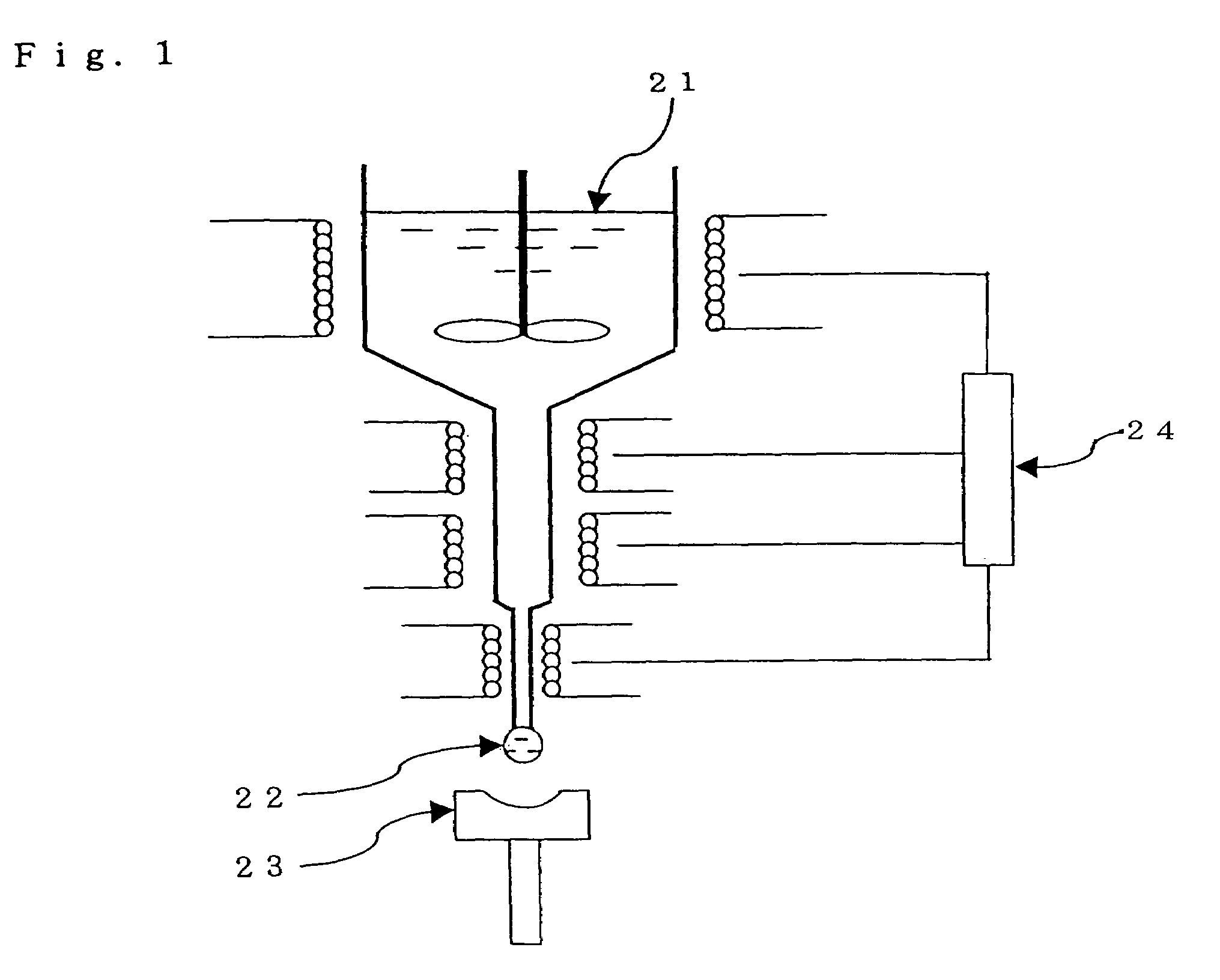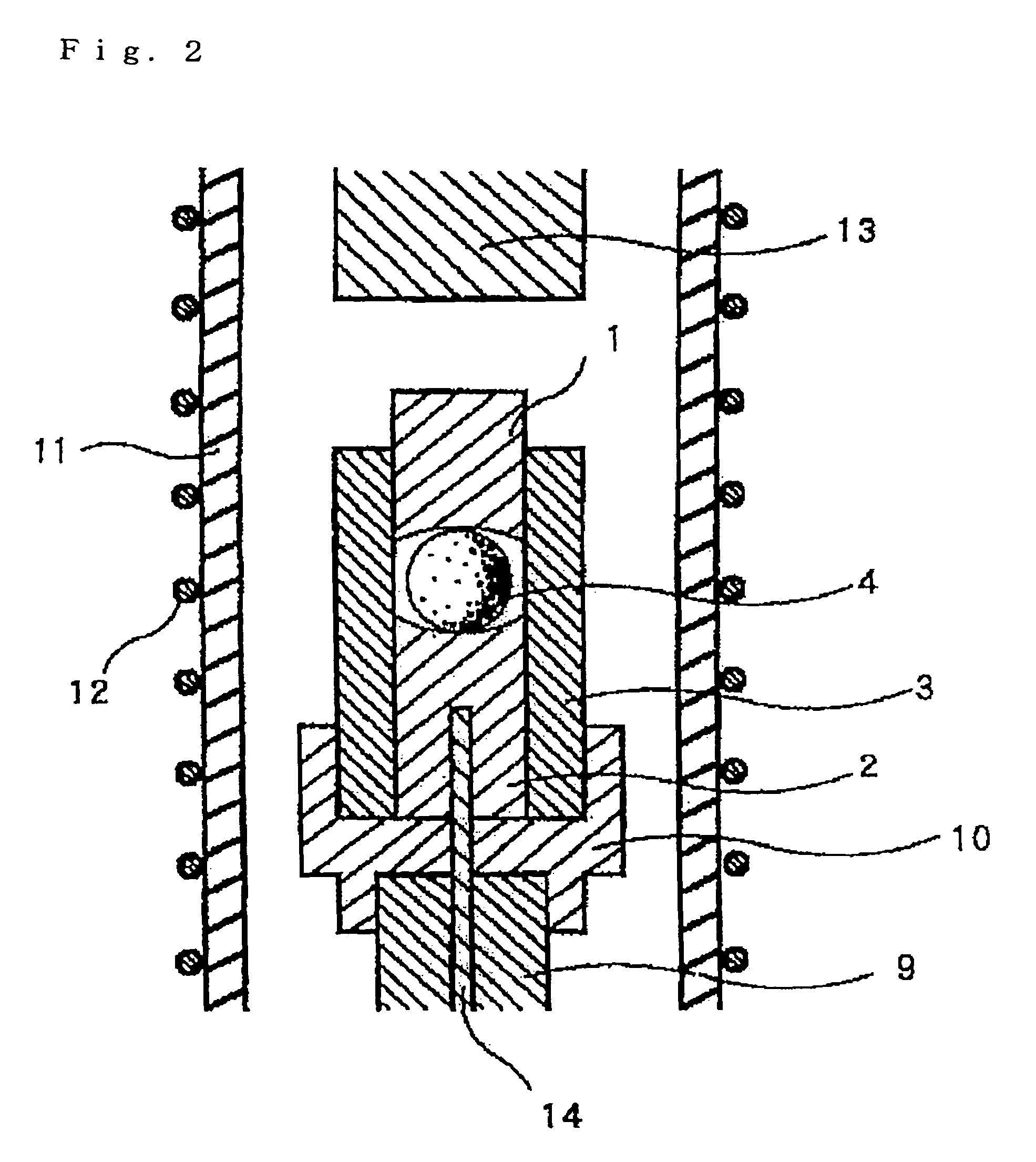Optical glass, preform for press molding and optical element
- Summary
- Abstract
- Description
- Claims
- Application Information
AI Technical Summary
Benefits of technology
Problems solved by technology
Method used
Image
Examples
example 1
[0113]As raw materials for glass components, corresponding oxides, carbonates, sulfates, nitrates, phosphates, hydroxides, etc., in an amount of 250 to 300 g were weighed in predetermined amount ratios shown in Tables 1, 3 and 5 and fully mixed to prepare a formulated batch. The batch was placed in a platinum crucible and melted at 1,100 to 1,300° C. with stirring in air for 2 to 4 hours. After the glass was melted, a glass melt (molten glass) was cast into a 40×70×15 mm carbon mold and allowed to cool to a glass transition temperature. Immediately thereafter, the glass was placed in an annealing furnace, annealed around a glass transition temperature for about 1 hour and allowed to cool to room temperature in the annealing furnace. The thus-obtained glass was observed through a microscope, to show no precipitation of a crystal.
[0114]Each optical glass was measured for a refractive index (nd), an Abbe's number (νd), a glass transition temperature (Tg), a liquidus temperature (LT) an...
example 2
[0130]The optical glass obtained in Example 1 was shaped into spherical preforms having a diameter of 2 to 30 mm with a hot preform floating shaping apparatus shown in FIG. 1. The preforms were shaped so as to have weights equivalent to weights of press-molded products to be produced. FIG. 1 shows a schematic cross-sectional view of the preform shaping apparatus, in which numeral 21 indicates a molten glass, 22 indicates a glass drop, 23 indicates a preform-shaping mold, and 24 indicates a temperature-control portion.
[0131]Then, the above preforms were molded as follows by means of a precision press-molding apparatus shown in FIG. 2. A preform 4 was placed between a lower mold member 2 formed of stainless steel having a spherical or aspherical surface form and an upper mold member 1 formed of stainless steel in the precision press-molding apparatus. An inside of a quartz tube 11 was filled with a nitrogen atmosphere, and a heater 12 is electrically powered to heat the inside of the ...
example 3
[0132]A pattern having an inversion form of a diffraction grating pattern was formed on a molding surface of a mold formed of stainless steel by cutting, and a press-mold consisting of a lower mold member and an upper mold member was prepared.
[0133]A preform that was the same as a preform used in Example 2 was press-molded under the same conditions as those in Example 2, whereby a diffraction grating was obtained. In this manner, excellent diffraction gratings were obtained.
PUM
| Property | Measurement | Unit |
|---|---|---|
| Temperature | aaaaa | aaaaa |
| Fraction | aaaaa | aaaaa |
| Fraction | aaaaa | aaaaa |
Abstract
Description
Claims
Application Information
 Login to View More
Login to View More - R&D
- Intellectual Property
- Life Sciences
- Materials
- Tech Scout
- Unparalleled Data Quality
- Higher Quality Content
- 60% Fewer Hallucinations
Browse by: Latest US Patents, China's latest patents, Technical Efficacy Thesaurus, Application Domain, Technology Topic, Popular Technical Reports.
© 2025 PatSnap. All rights reserved.Legal|Privacy policy|Modern Slavery Act Transparency Statement|Sitemap|About US| Contact US: help@patsnap.com


